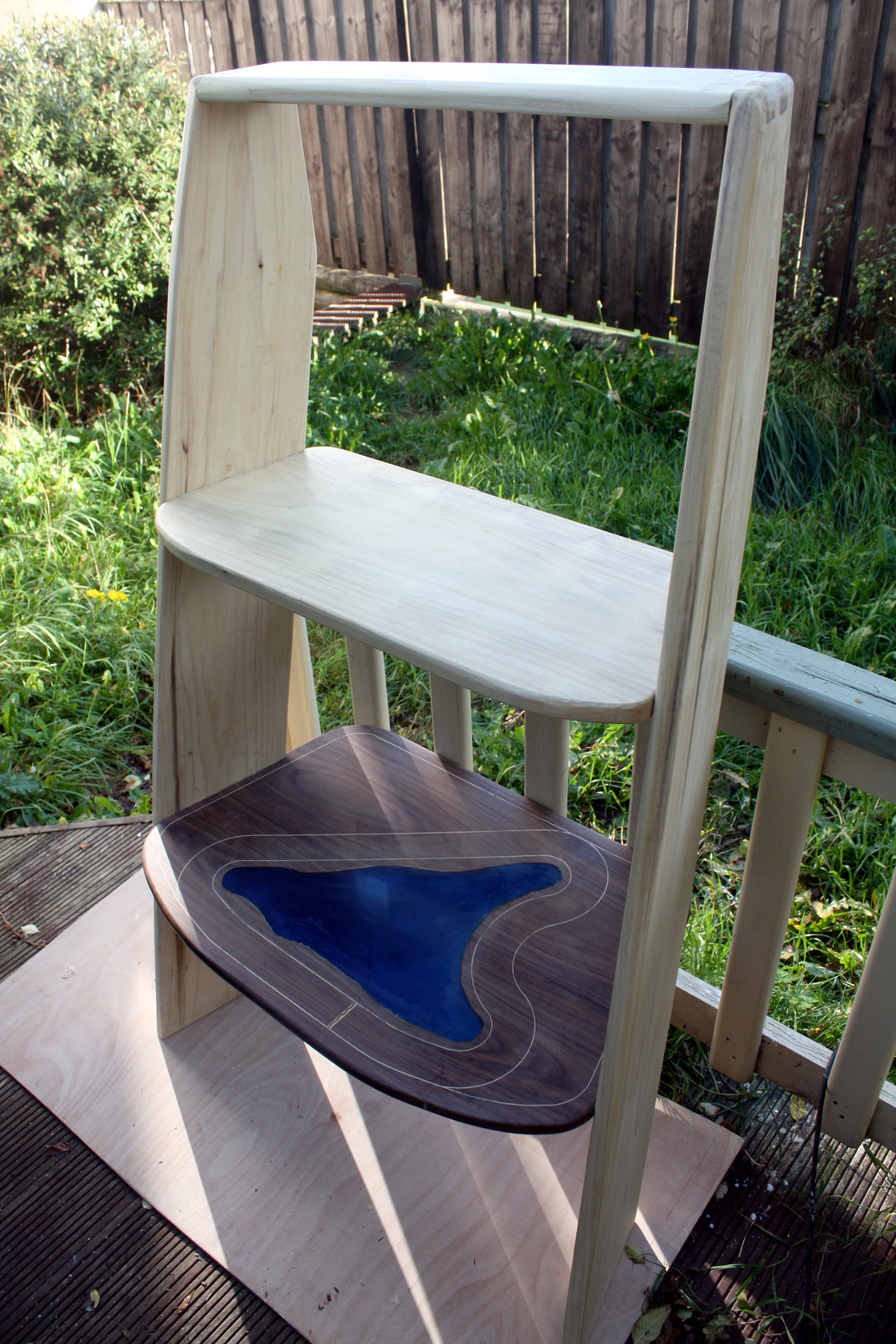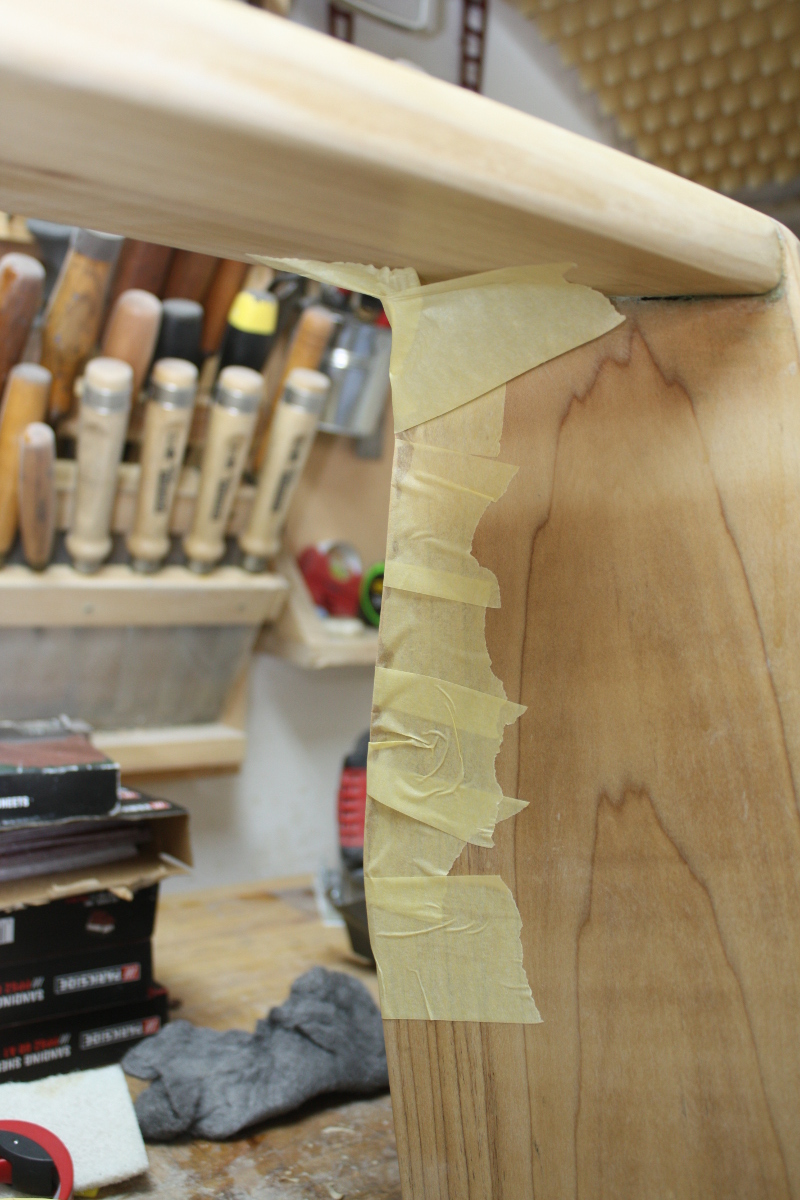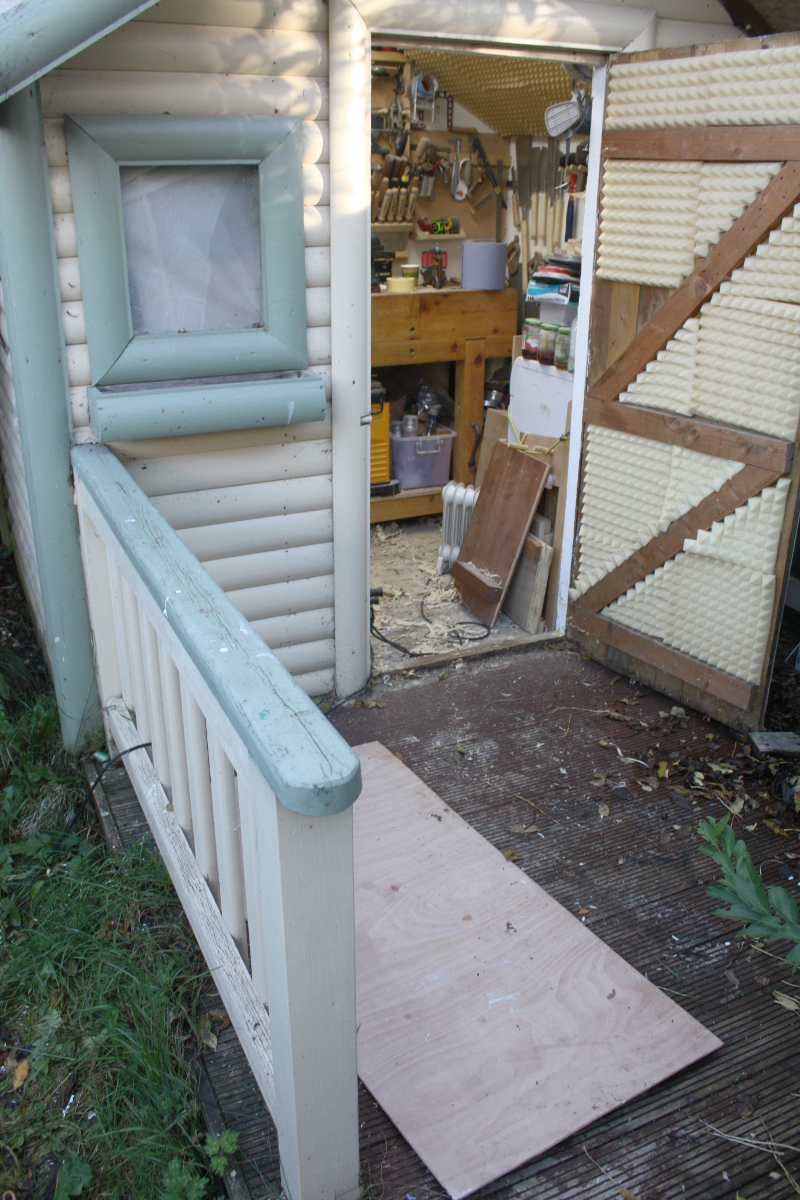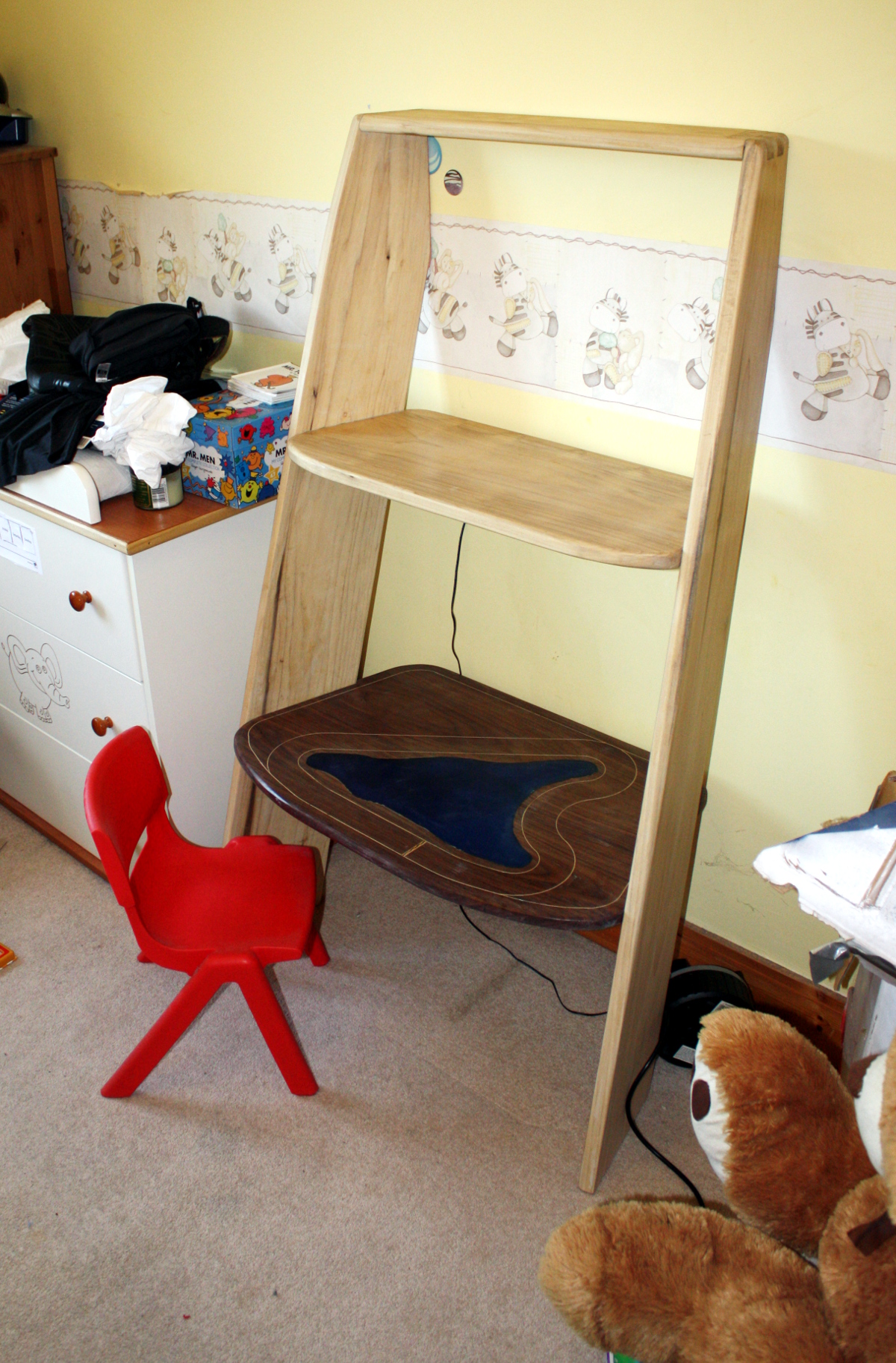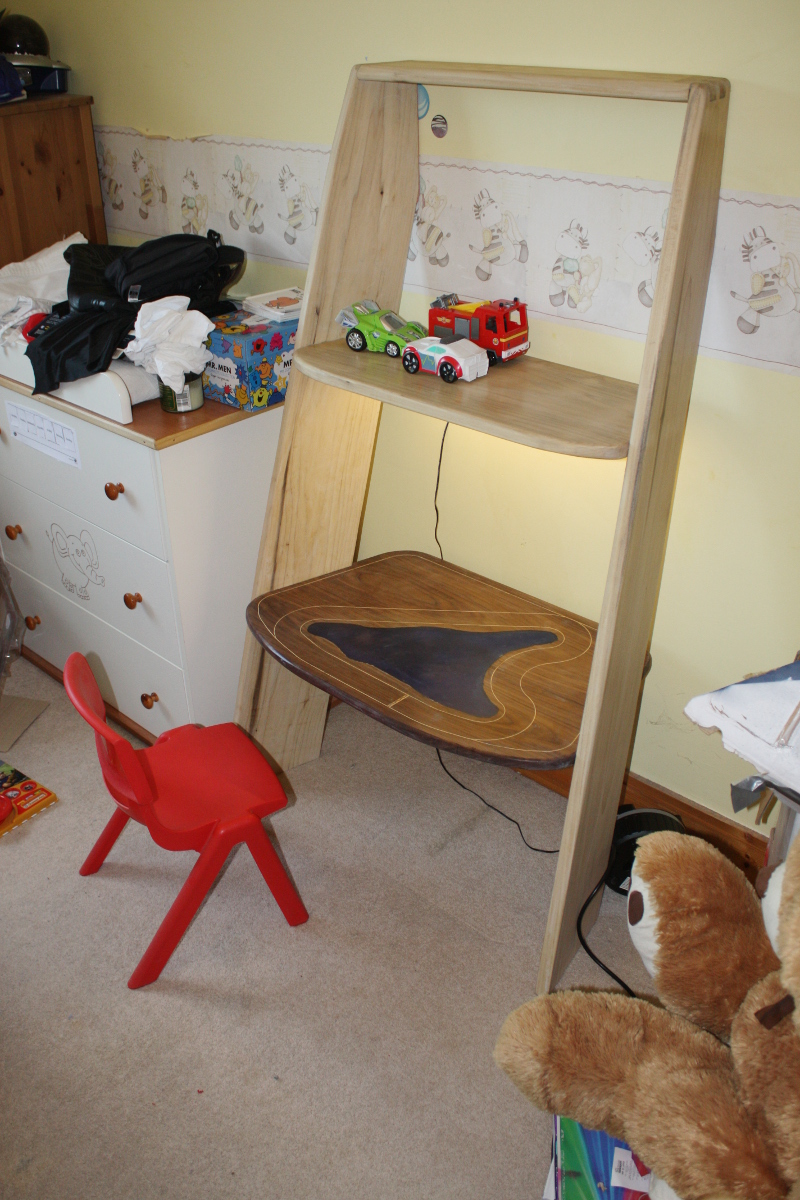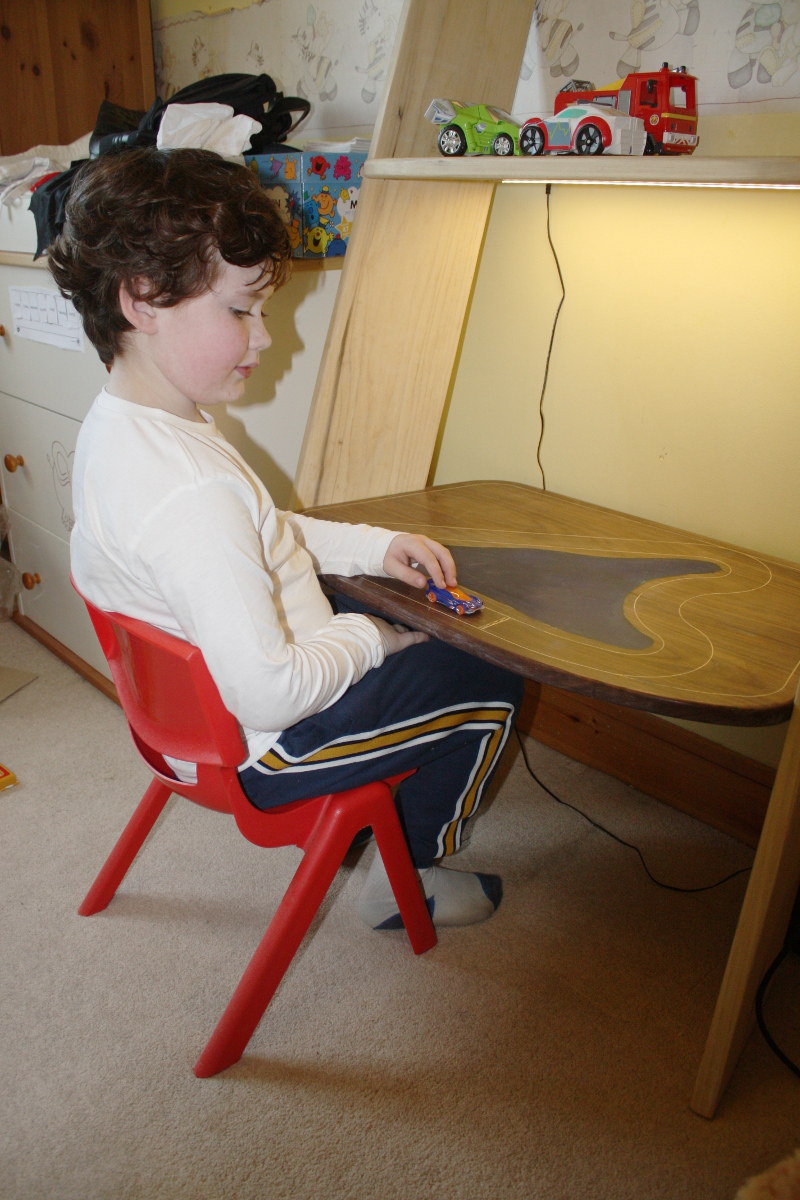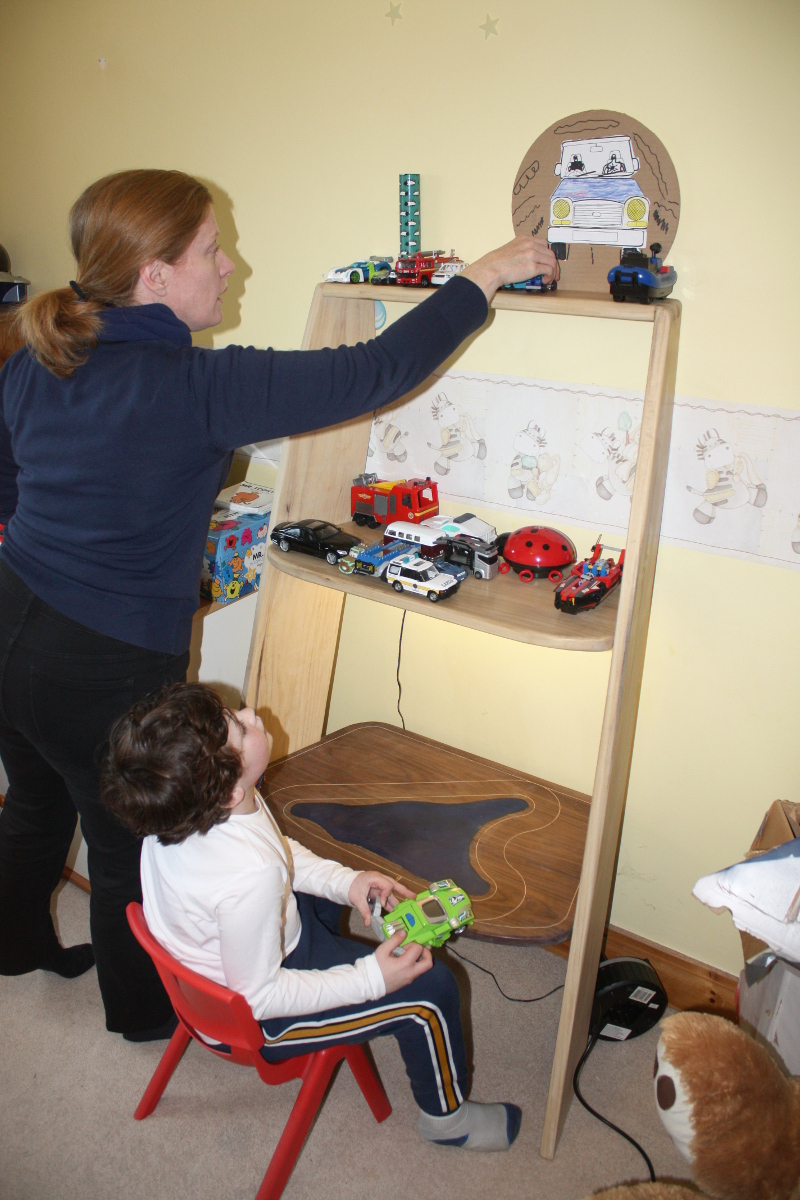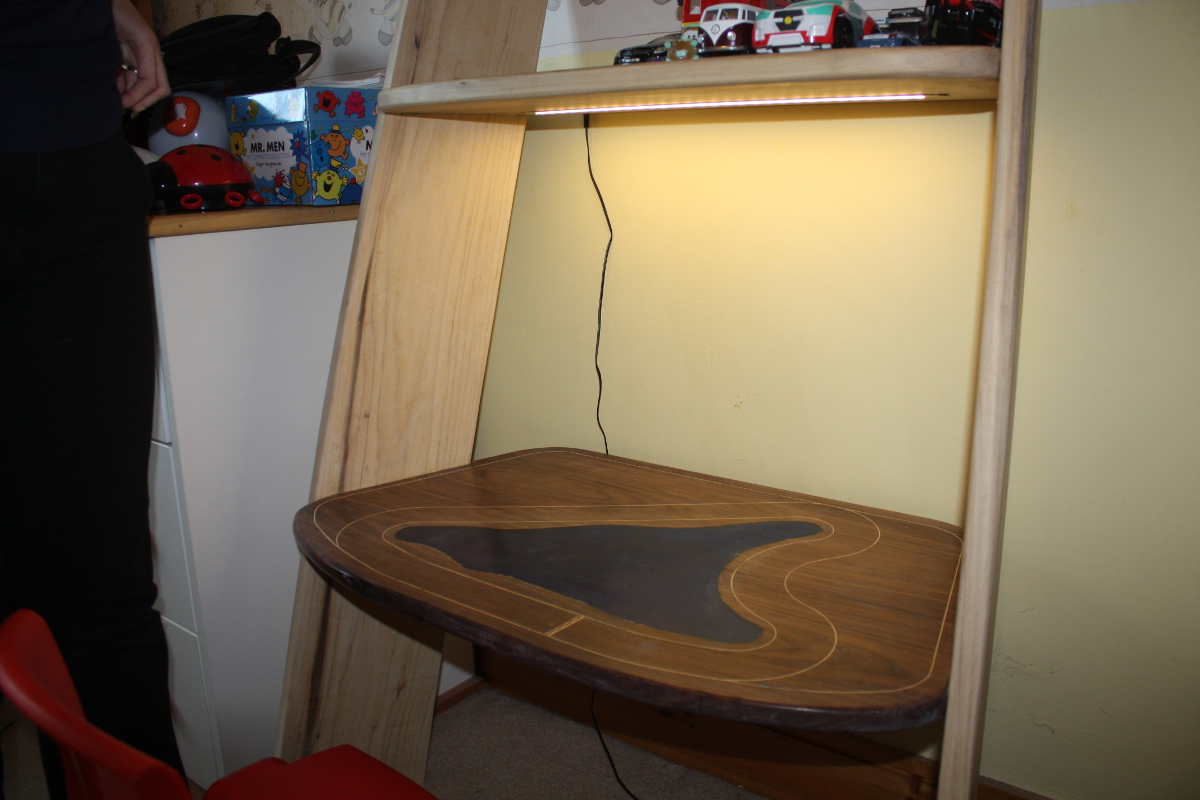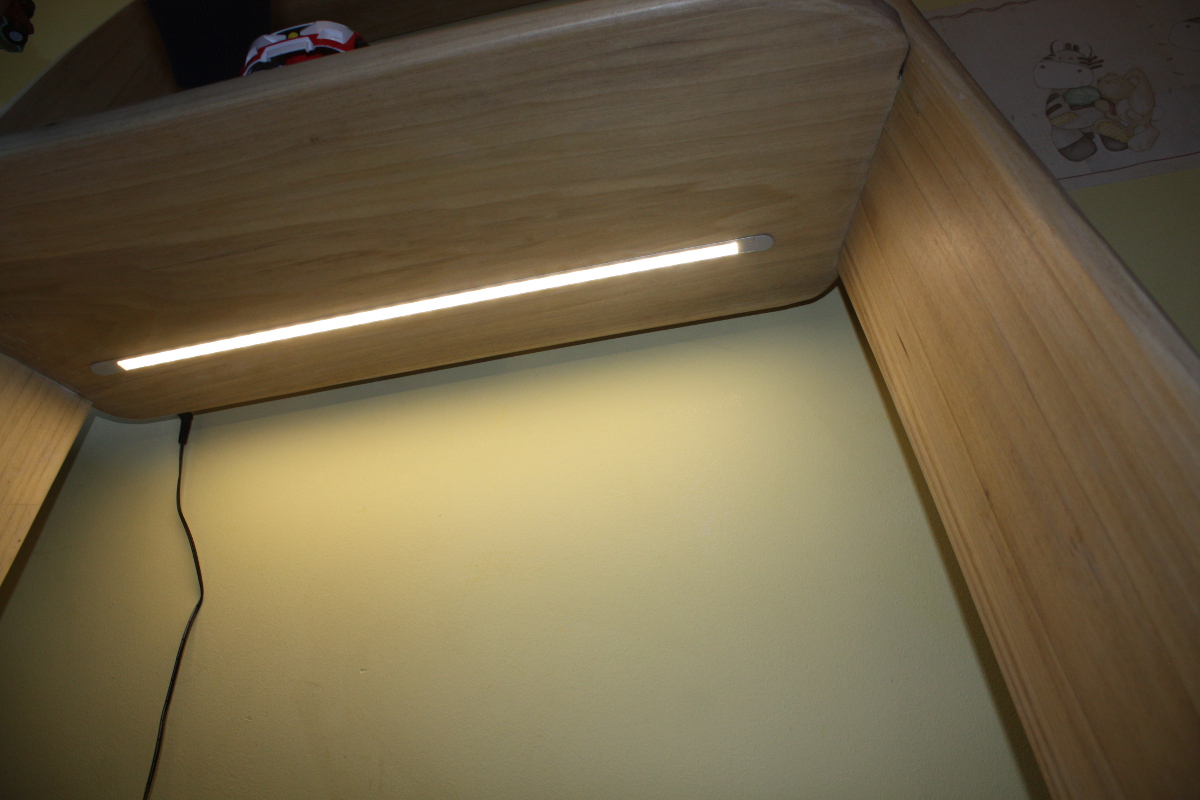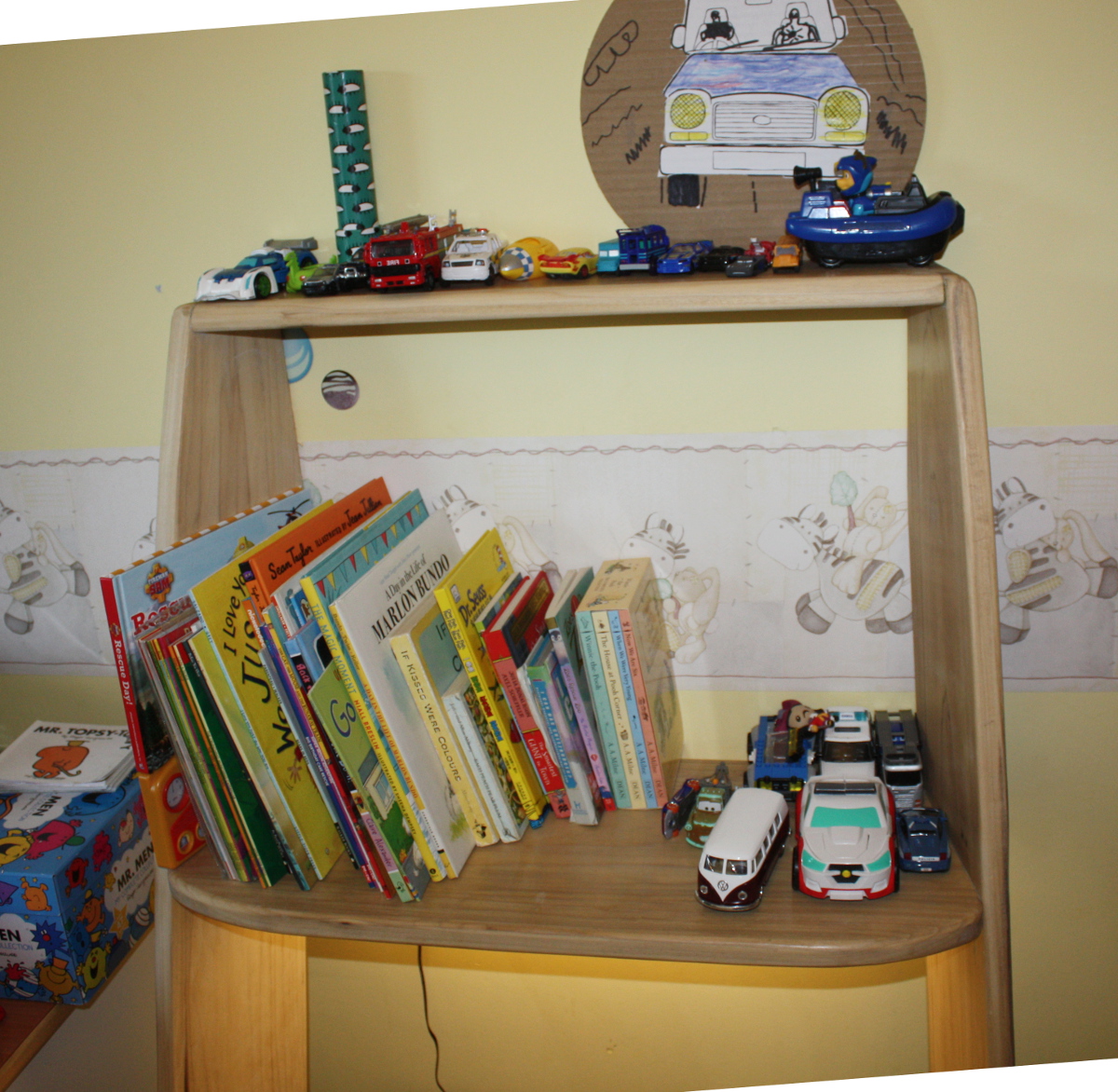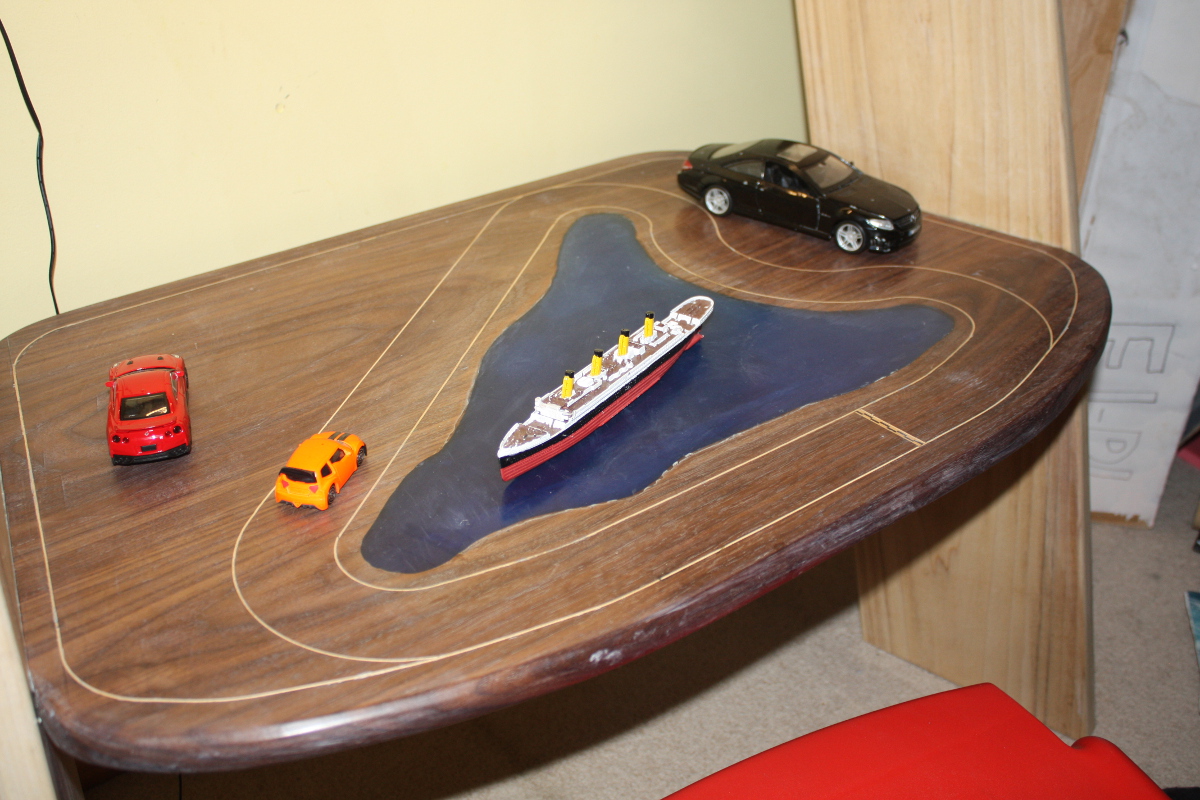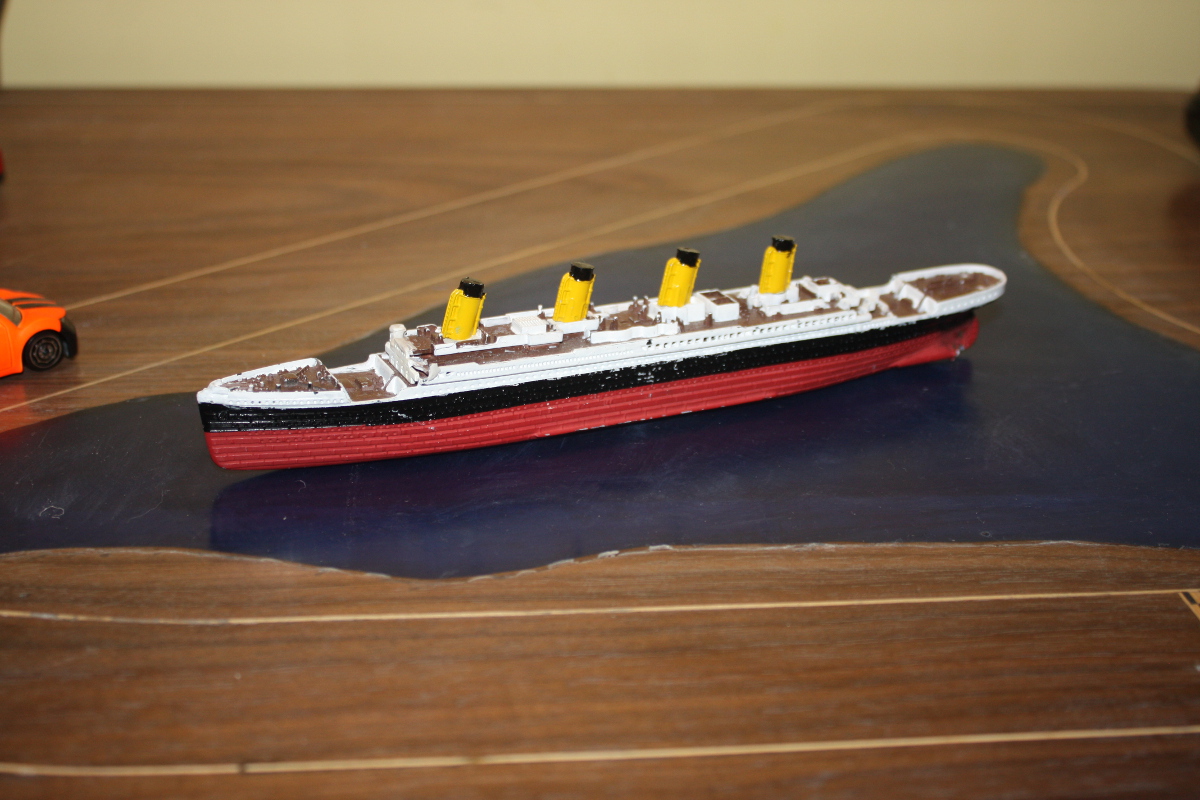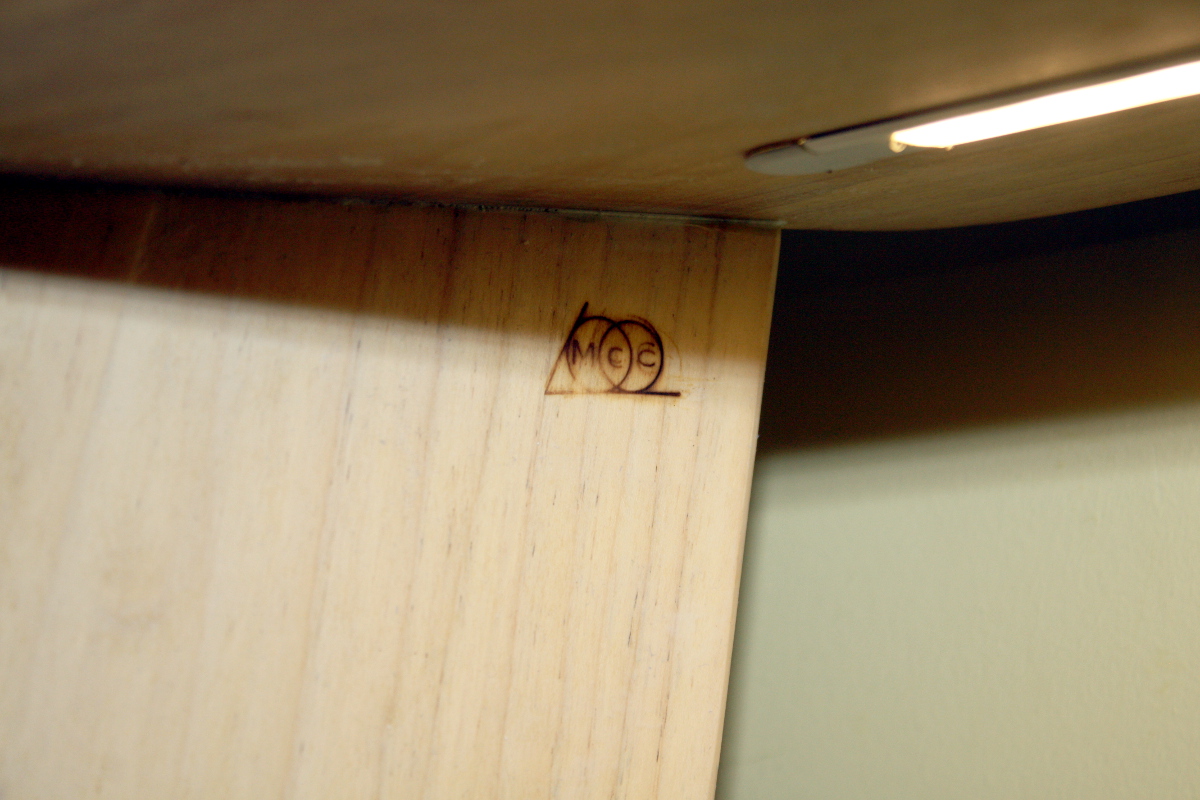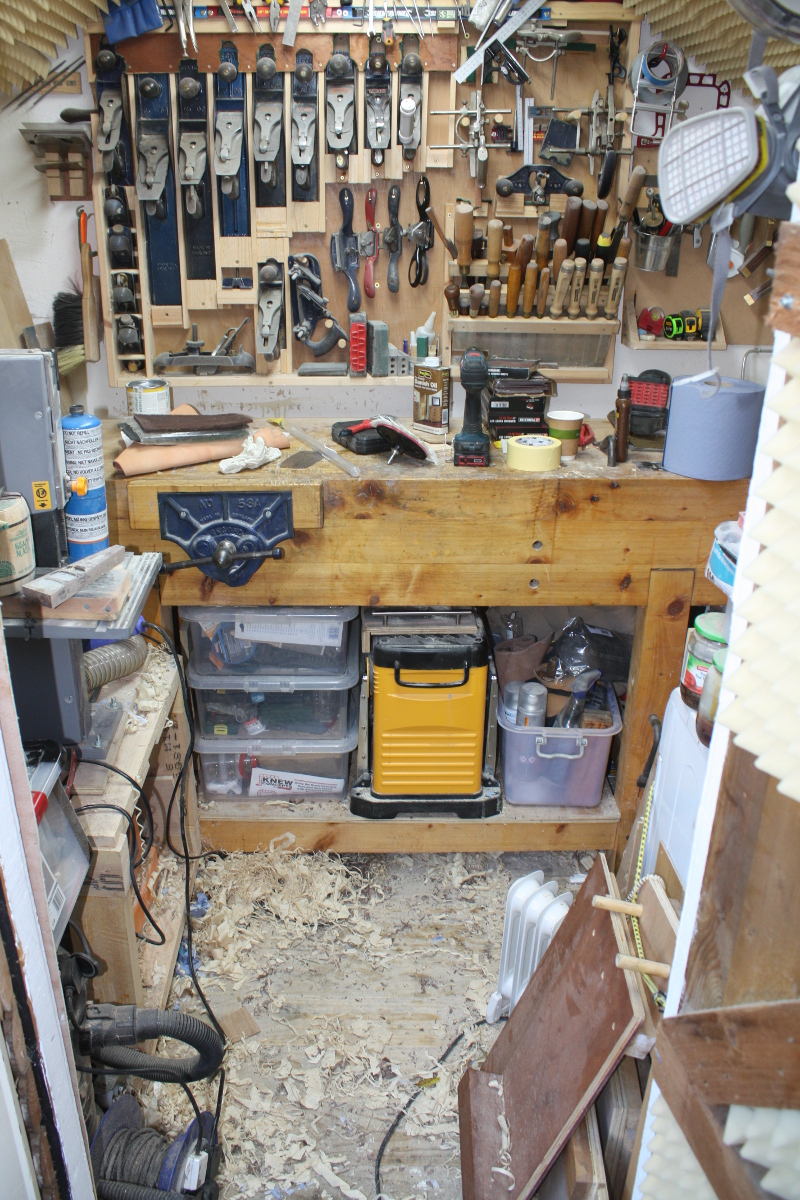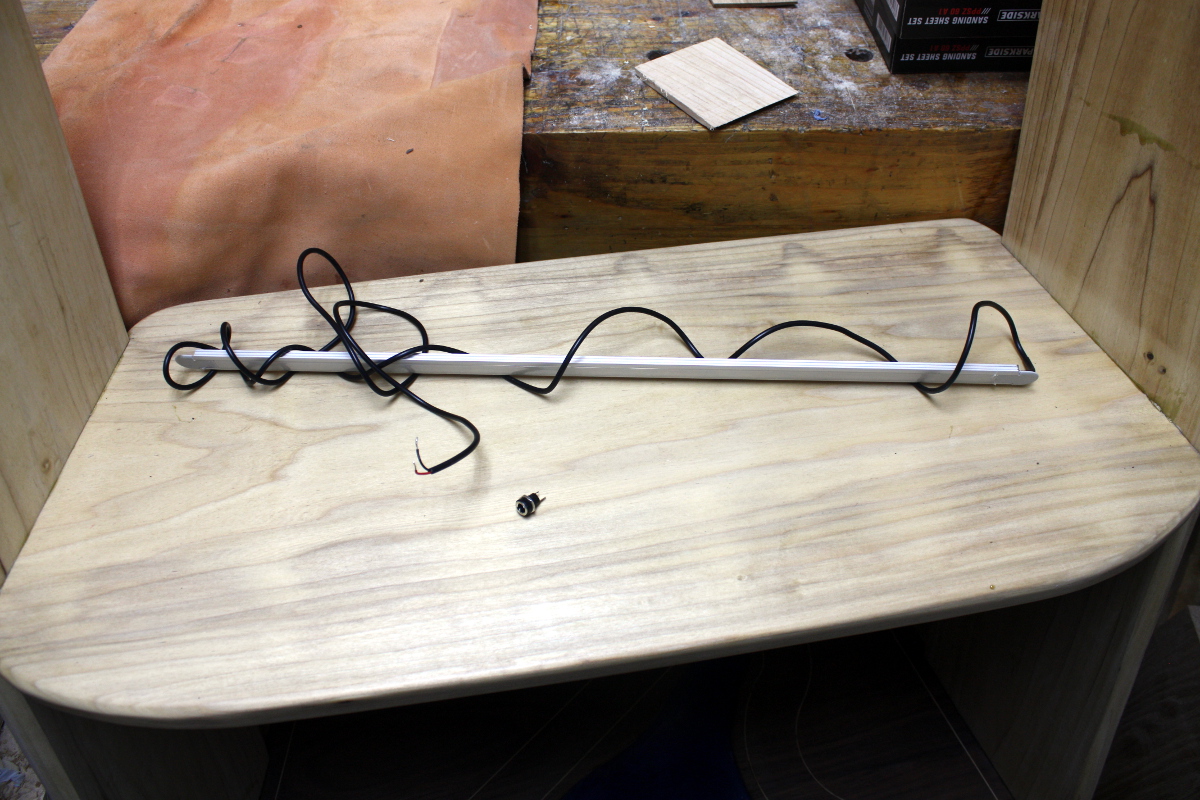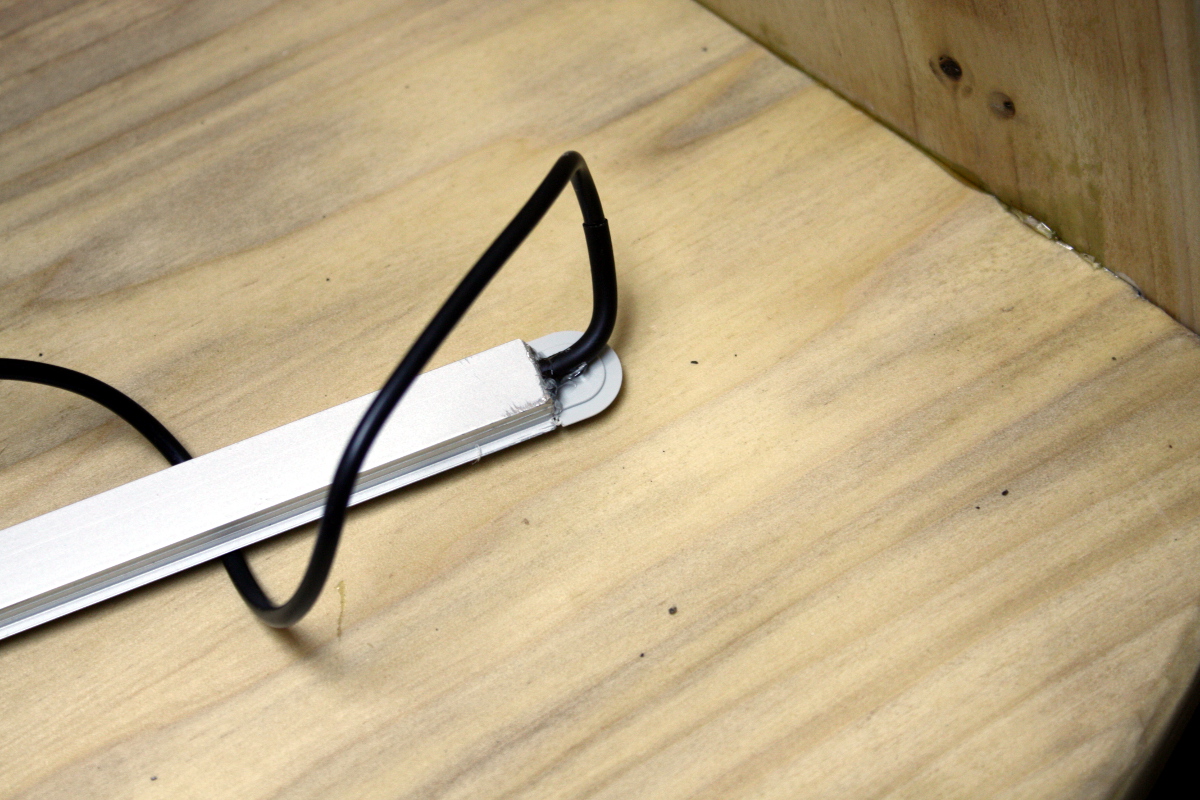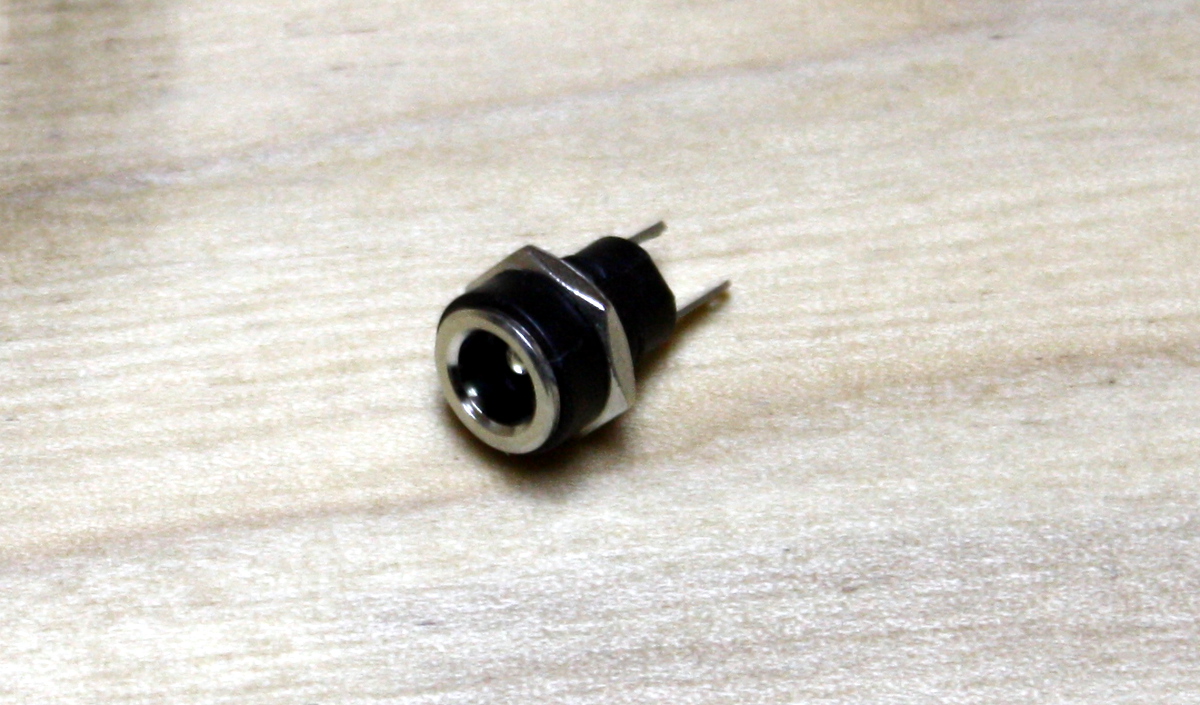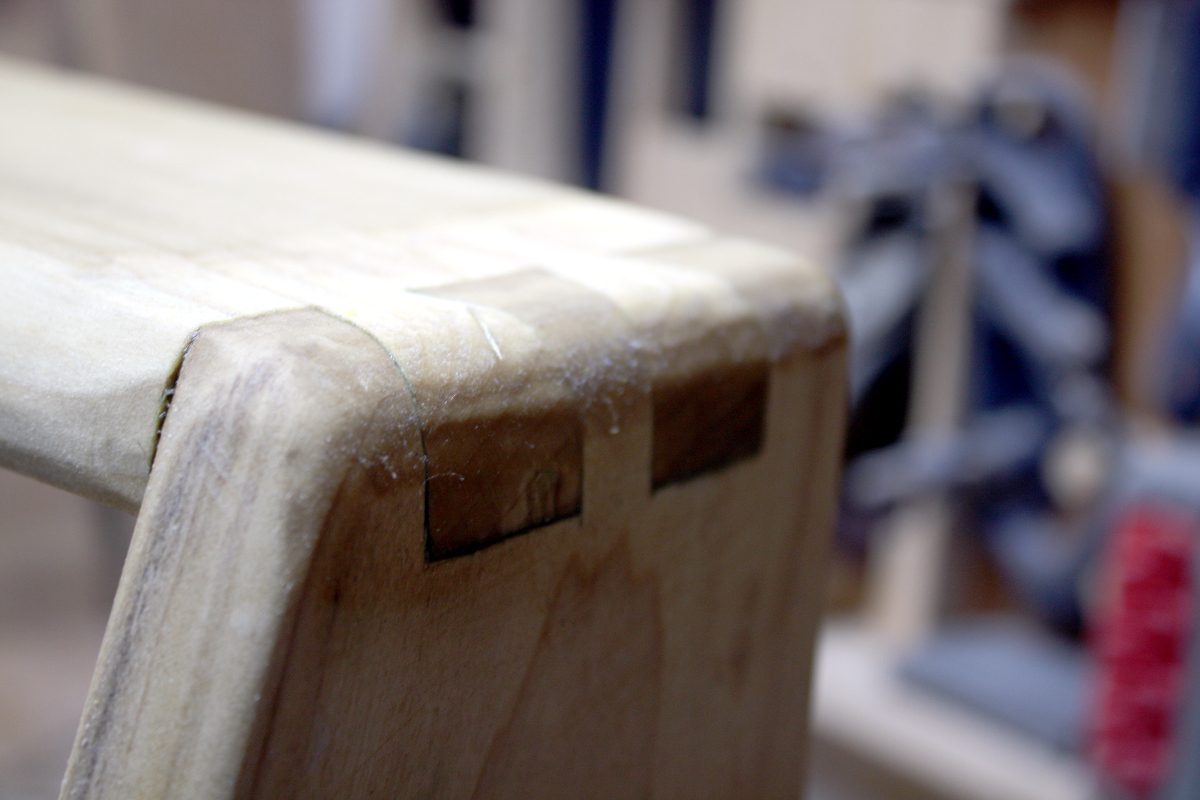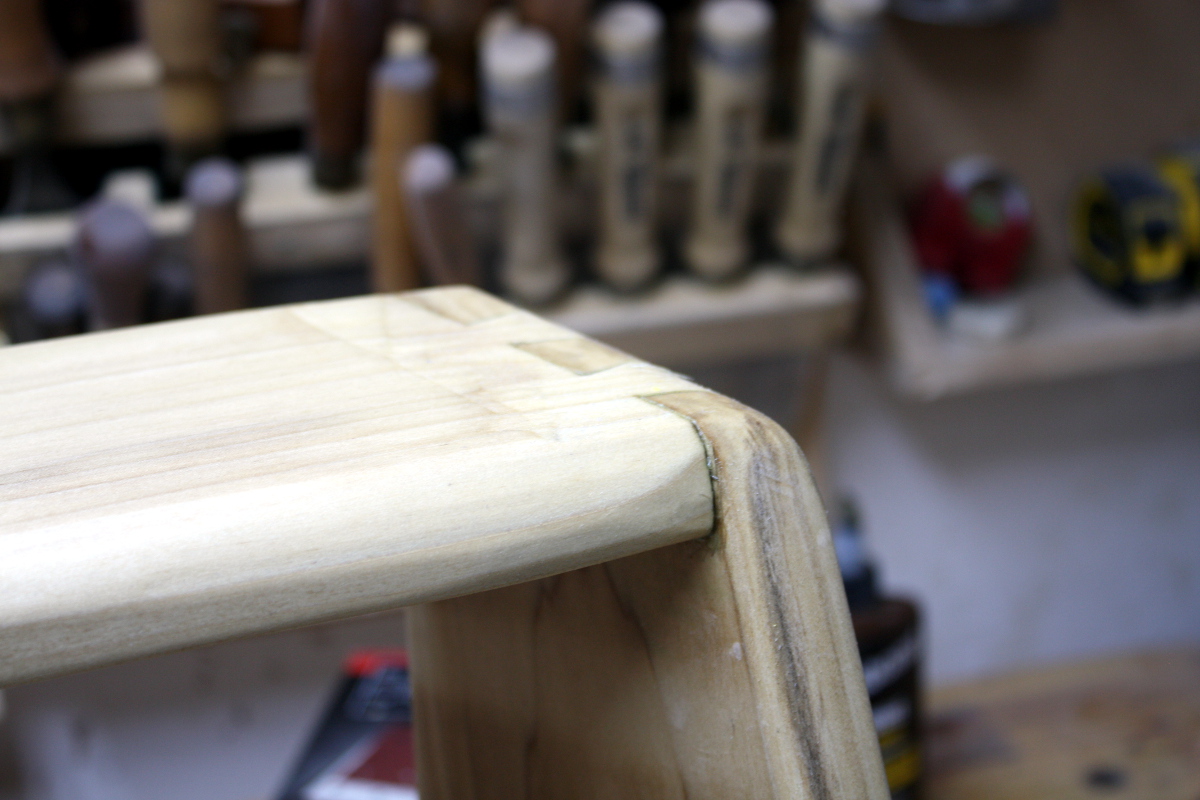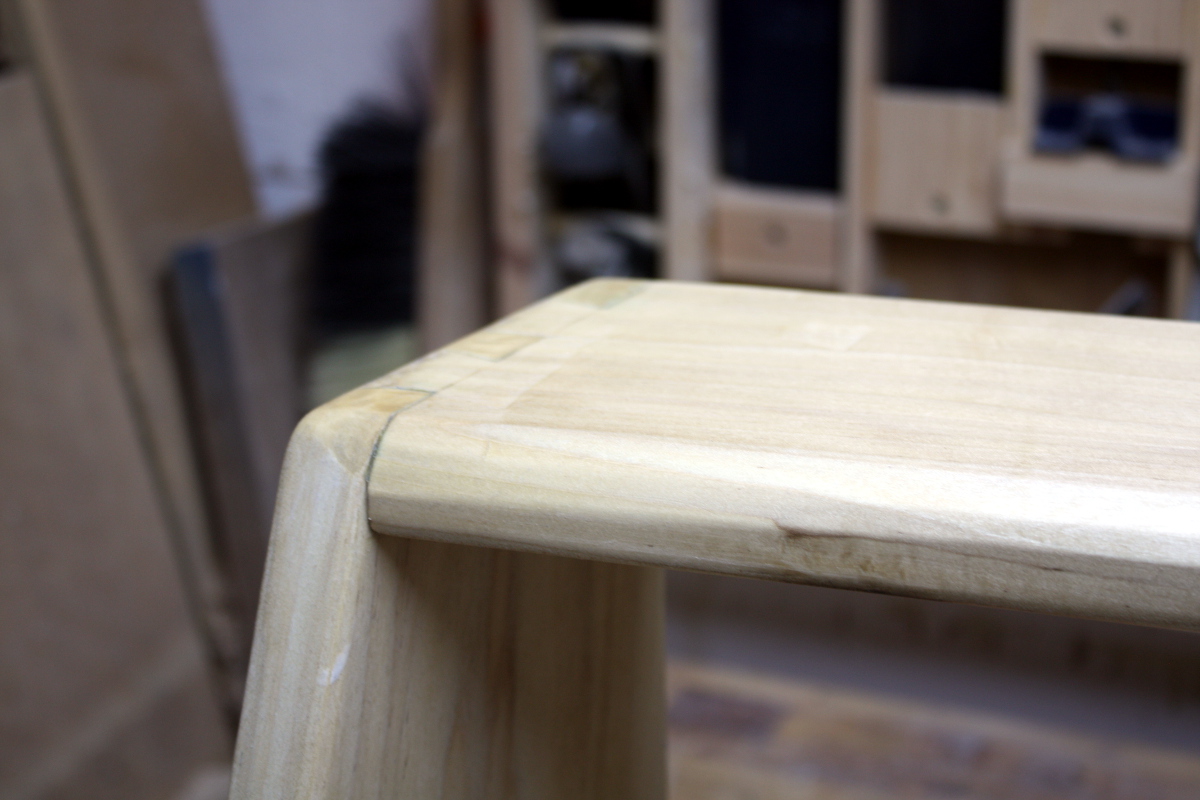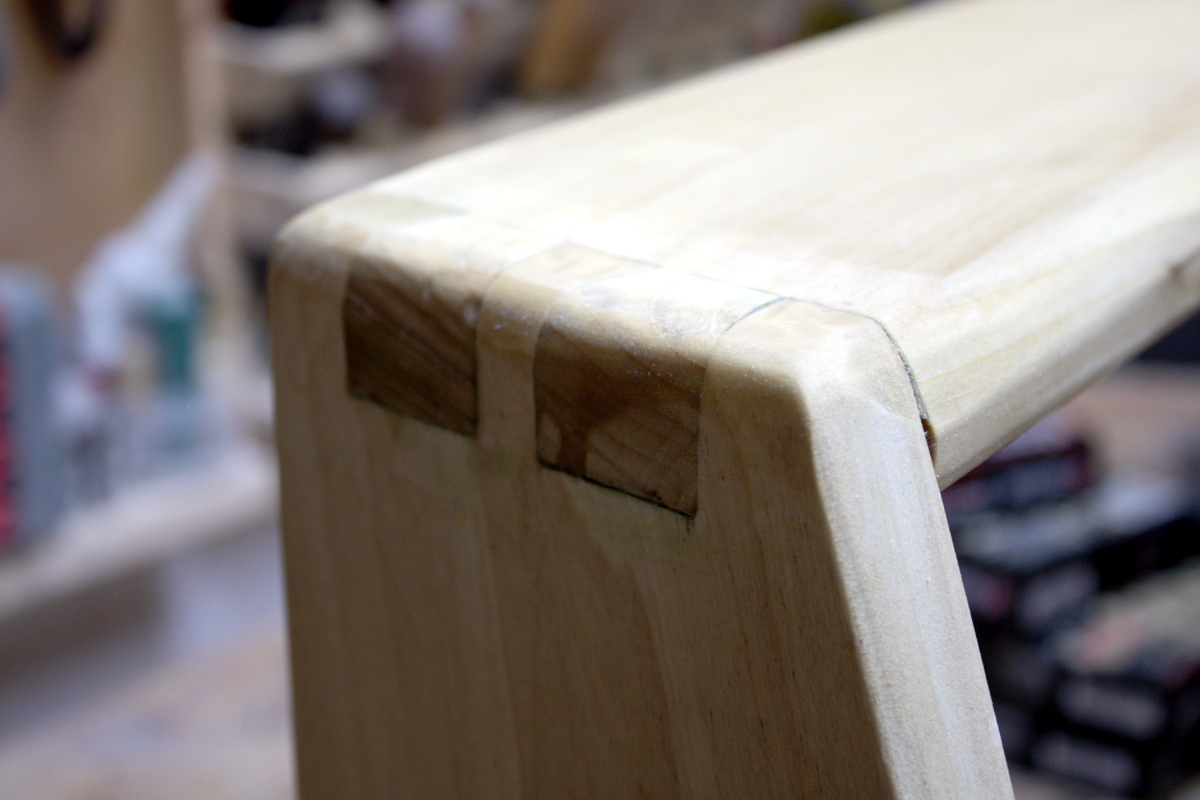After every long project, the shed is usually a mess – stuff I can’t reach around the piece of work physically to grab and put back in its place, finishing supplies out of their usual storage boxes, sawdust and shavings everywhere, and so on. Stuff you’ll get to when you have a minute. So today was cleandown day after the desk. On with the kneepads, pop out the collapsable garden waste bin (useful little thing that) and I wheeled the bandsaw and sander outside to give room to get all the detritus out, stuff that had built up over the last year or so, including behind and under the workbench and in between the stored wood planks. Long projects are the worst for this sort of thing.
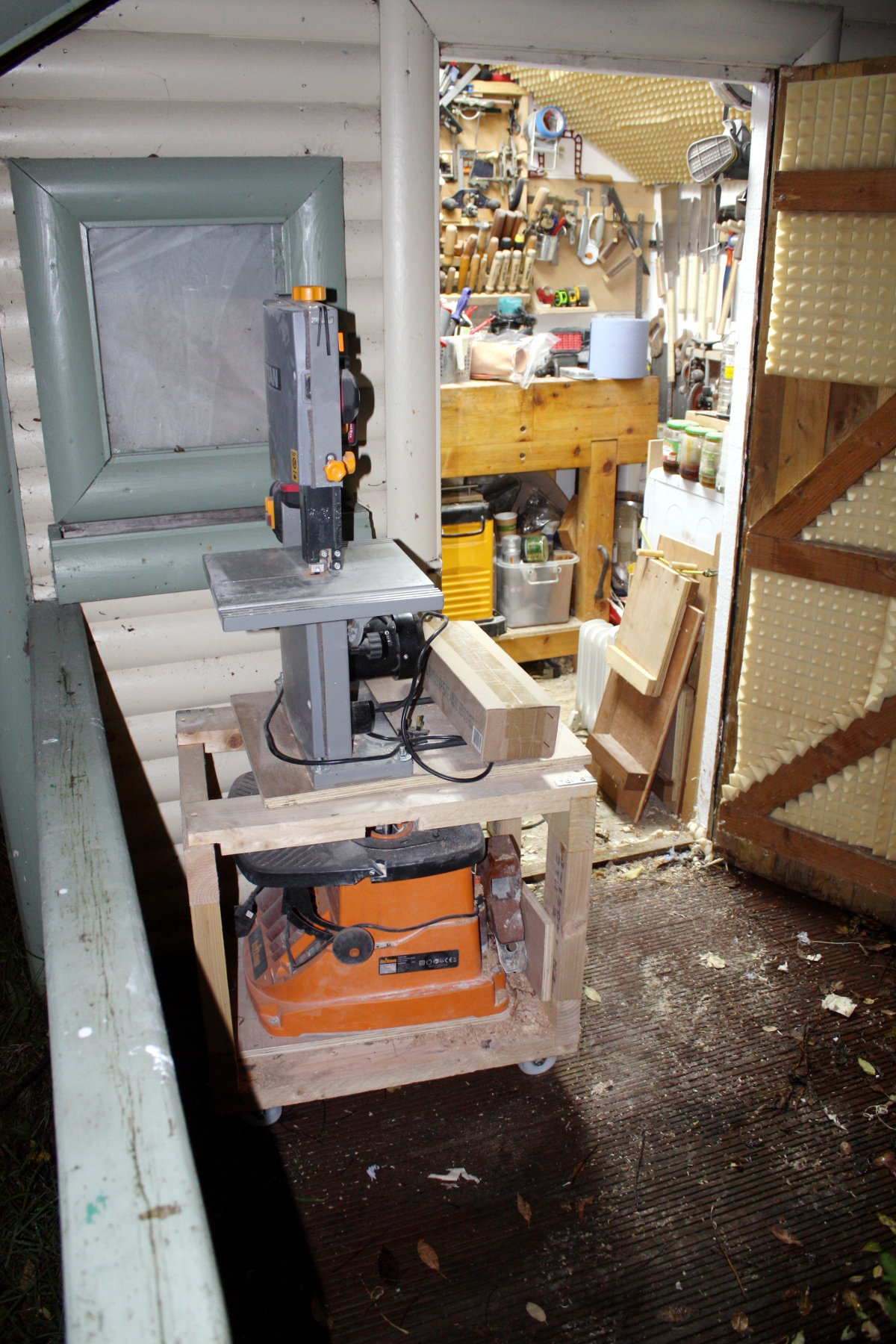
Two hours in, I came to a decision to go through all the scraps and offcuts and get merciless. Anything that was being held onto for bandsaw box material or cutting board material got a careful looking over and if it warped, if it wasn’t large enough realistically, if there was any wane, it all went in the bin. Which is doubly painful for me because thanks to our local government rules, you can’t burn wood in a fire pit outdoors, and we don’t have a woodburning stove indoors, and the local recycling center will take wood but it has a minimum charge for a full carload and one binbag of offcuts costs as much to recycle as a full van stacked floor to ceiling until its suspension cracks. The local bin collection company, Panda, will not accept shavings or sawdust or solid wood in the compost bin or the recycling bin, all of which taken together means that I can pay 80 quid for a cubic foot of walnut, then pay another tenner or so to dispose of the sawdust, shavings and offcuts after the project is done.
This is not an environmentally sound set of policies.
Anyway, after clearing out as much detritus as I could, I started to reorganise things. Small offcuts go in a largish storage box, I returned the paints I’d borrowed as resin dyes to the arts&crafts box for junior, and finally hung my panel gauge and grasshopper gauge up on the wall to try to dissuade myself from letting stuff build up there again.
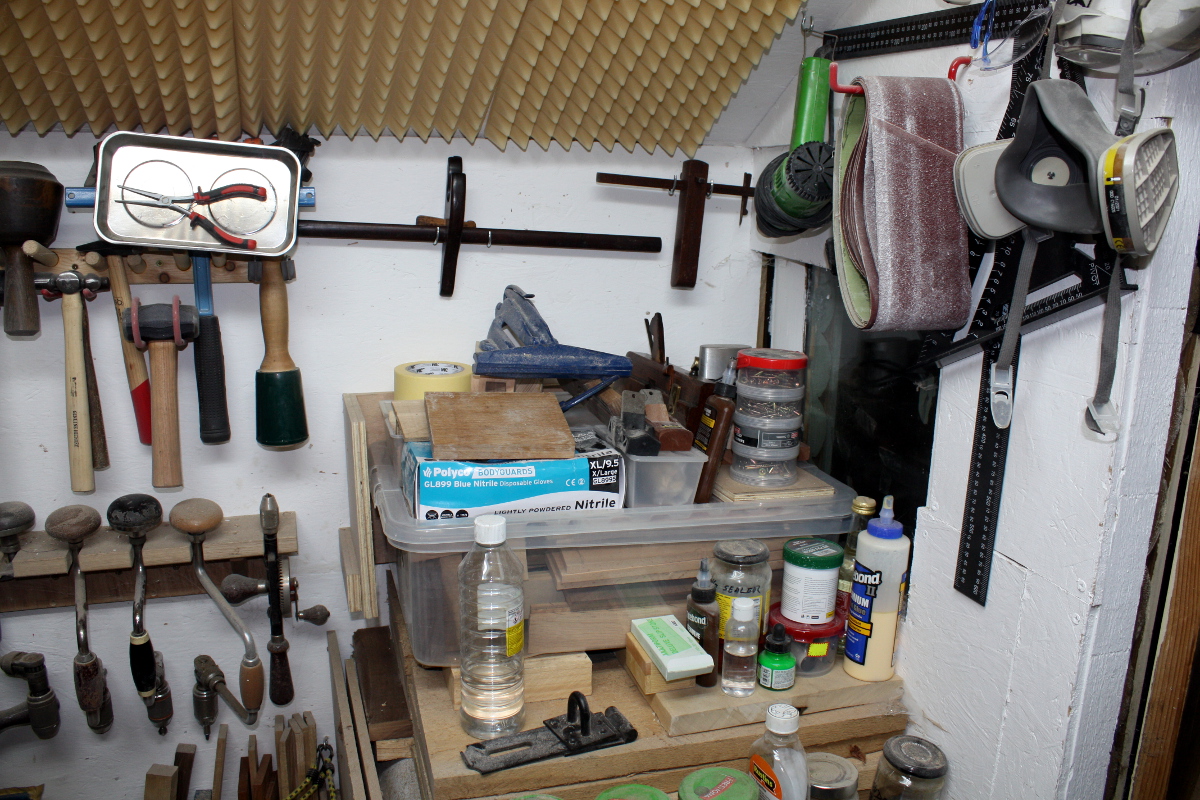
There are about four small shed jobs lying on top of there already though, an unfinished bandsaw box, a new-to-me saw vice that needs a mounting solution so I can try to finally sharpen and get to grips with my western saws (before I finally call it quits and get a new veritas saw or something), my new-to-me moving fillister plane that needs a better mounting place, and I really need to replace the hasp on the door with that new one. I did at least manage to hang up the heat gun (I know, I know, it has a plug, but do you know how they heated stuff in the 17th century? They set it on fire. That won’t fly here 😀 )
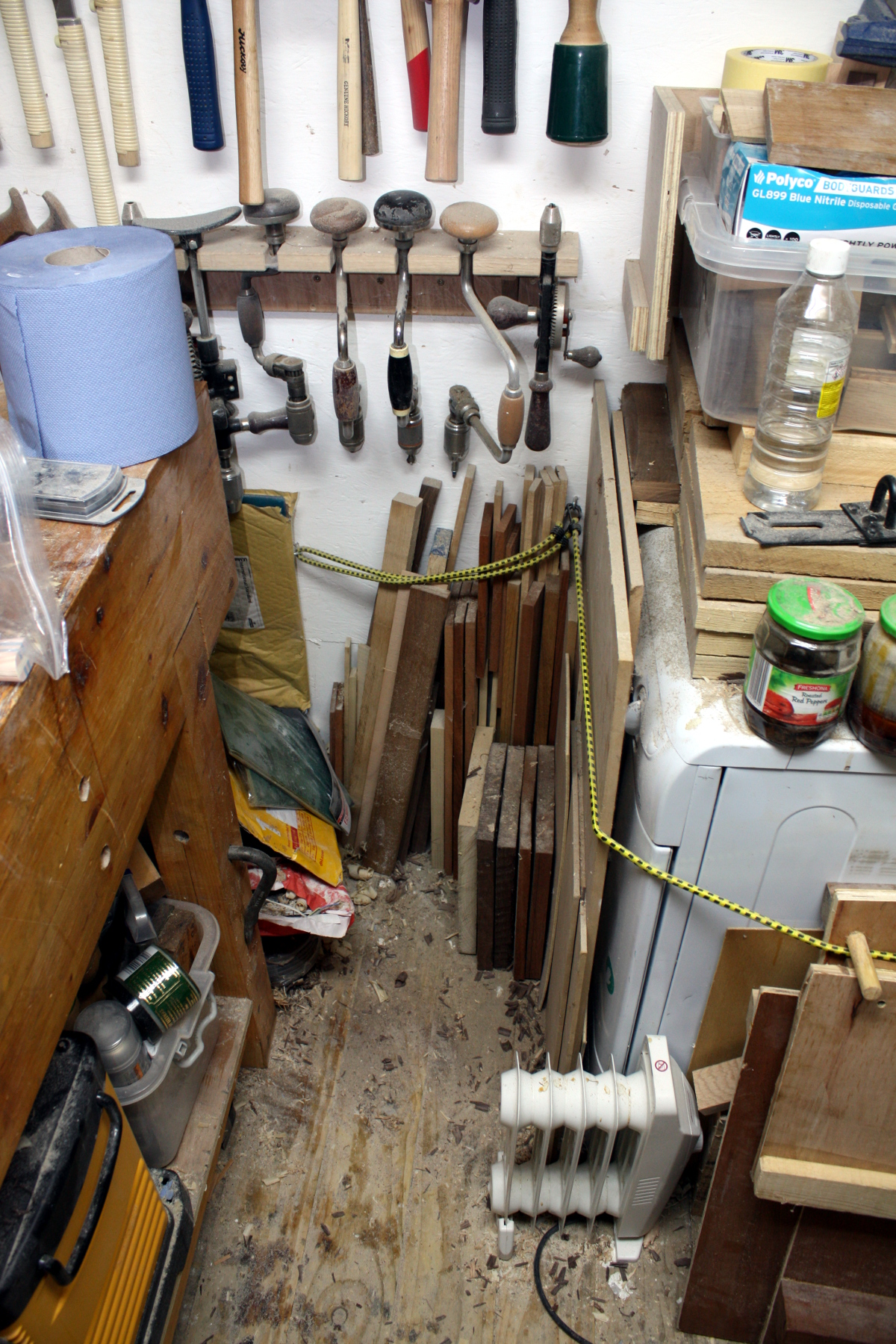
I can actually see the floorboards. I mean, there’s still a mess of finishing stuff round the end of the table, but I could actually stand there. Luxury!
And on the other side, I rearranged all the larger boards I have left, and the smaller ones, leaving stuff I know I’ll want to get to soon towards the front, and generally tidied stuff up.
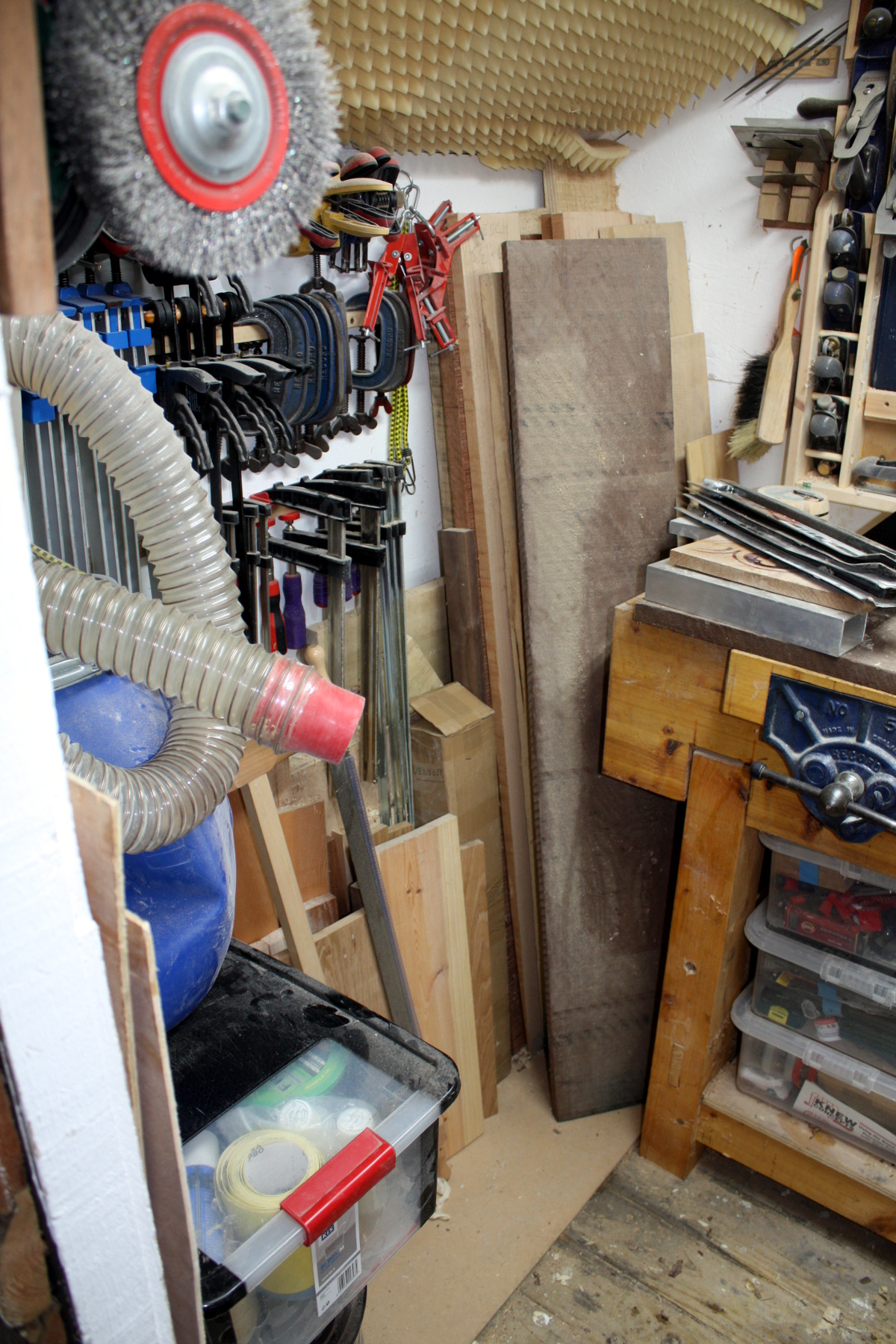
I think I want to take the dust collection vac and dust deputy solution I have there and build a proper cart for it. It’s all kindof piled up in the corner (along with that box of finishing stuff) and that’s just so damn messy. A cart might actually save me a few inches of room.
And those few inches are pretty critical. If I rebuild the cart for the bandsaw using something other than the 2x4s I knocked this one up out of, I might regain just enough space that using the vice is no longer very awkward…
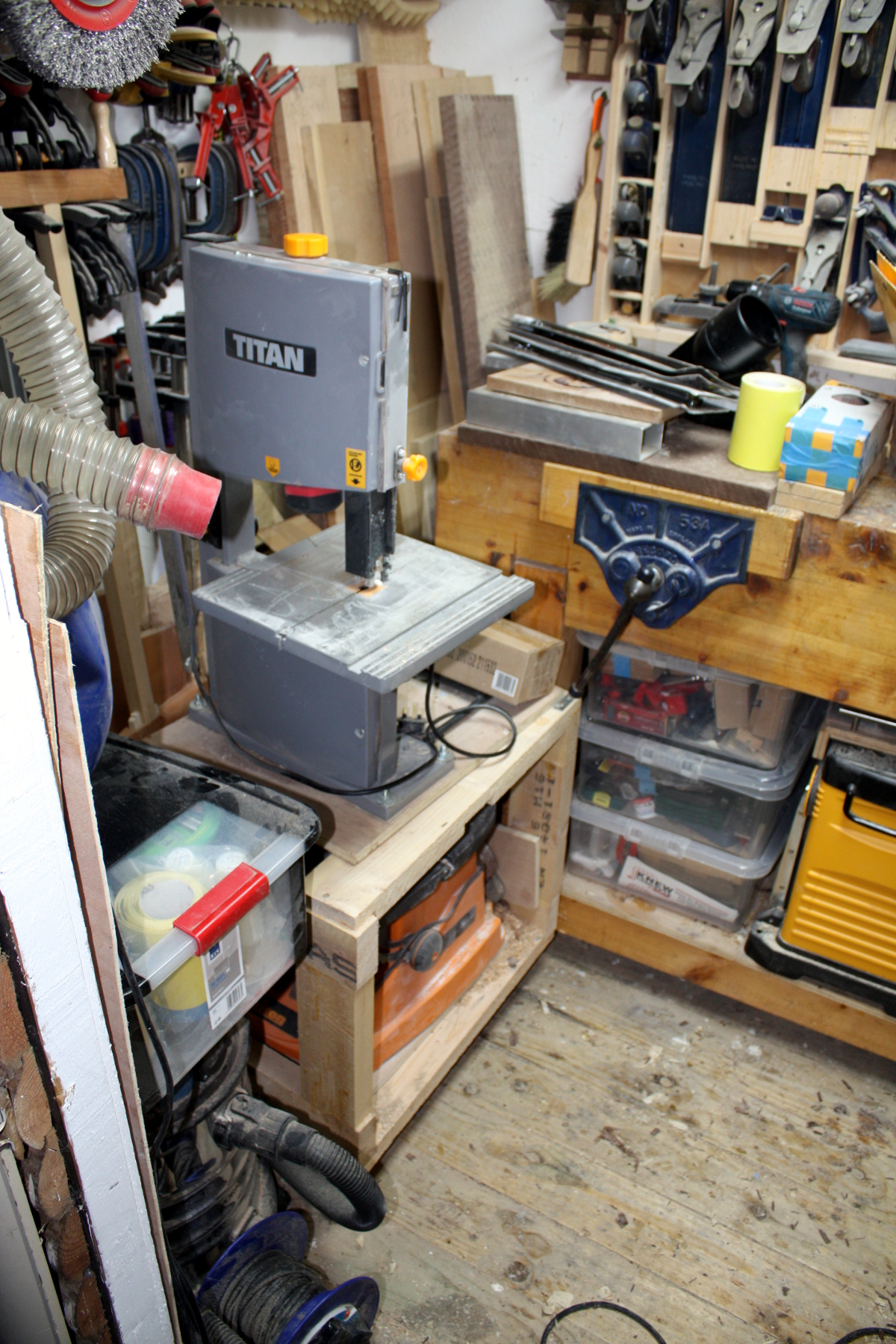
Even getting those storage boxes out from under the vice is a pain because of two inches of protrusion by the cart. Make it over, make it a bit tighter, might get that space back.
Of course, first I want to finish the tidying up…
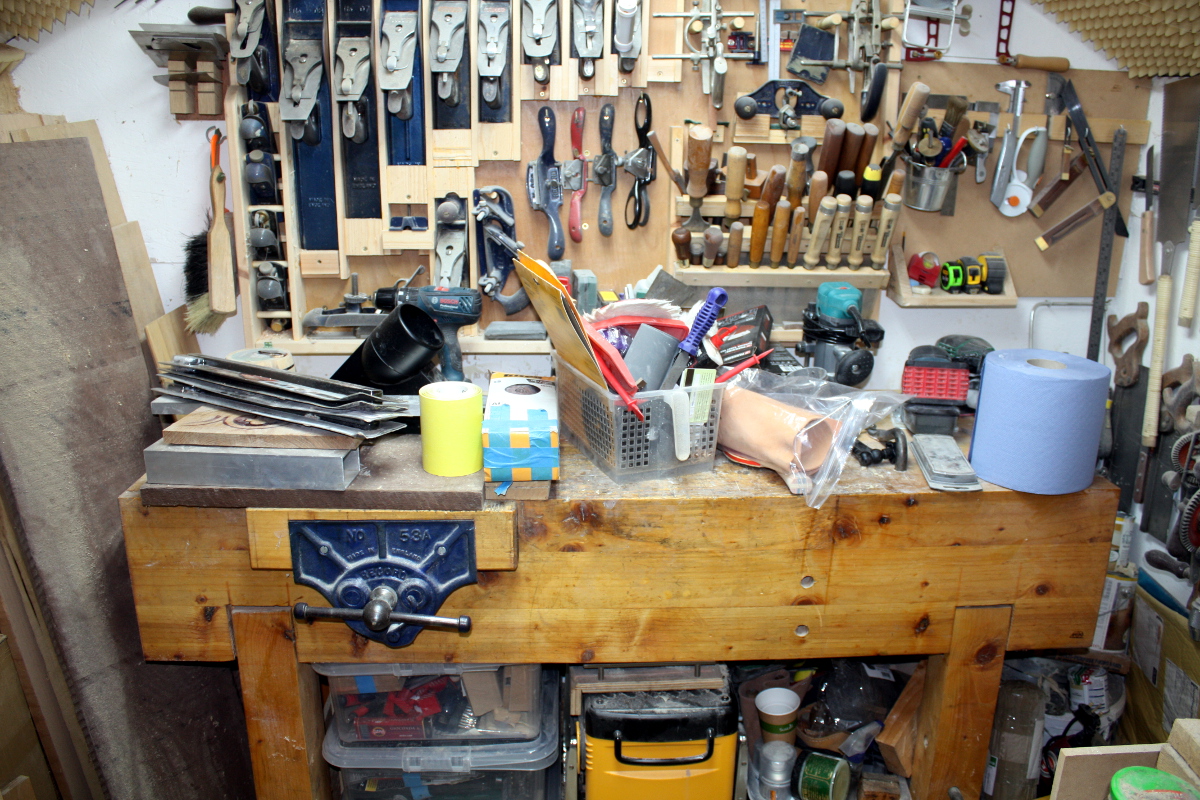
…and then there are just a few projects to dive into, like hooking the thicknesser up to the dust collection…
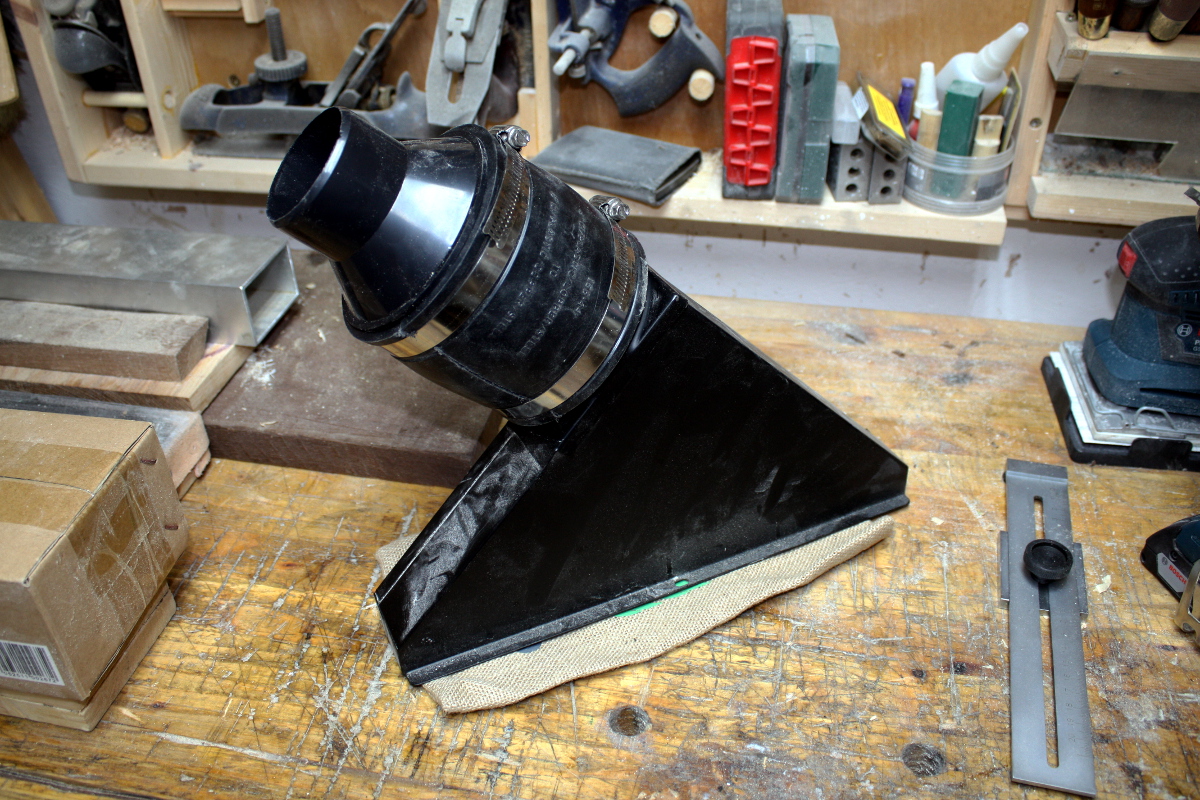
…and I have a few projects in mind after that as well…
…so yeah, I might get to the cart sometime next year. Or after that. Such is the way these things go 🙁
